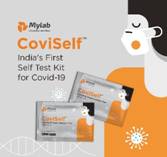Researchers at the Pennington Biomedical Research Center have published a comprehensive review detailing the evolution and challenges of electronic health records (EHRs) in medical research over the past 25 years. The study, titled “Twenty-Five Years of Evolution and Hurdles in Electronic Health Records and Interoperability in Medical Research: Comprehensive Review,” was published in the Journal of Medical Internet Research (JMIR) and offers critical insights into how EHRs have shaped medical advancements.
The Evolution of Electronic Health Records
Dr. Yun Shen and Dr. Gang Hu, experts in chronic disease epidemiology and population health trends, have been at the forefront of utilizing EHRs to study chronic diseases, analyze health trends, and apply predictive analytics.
While EHRs primarily serve to facilitate patient data sharing among healthcare providers, their integration with big data analytics and artificial intelligence has unlocked previously unseen patterns, driving significant medical innovations.
“Medical record keeping dates back thousands of years, initially as simple documentation of treatments and symptoms,” explained Dr. Shen, Assistant Professor of Chronic Disease Epidemiology Research at Pennington Biomedical. “Modern digitization efforts began as early as the 1960s, with the goal of reducing physical storage needs. Since then, the scope of EHRs has expanded to significantly enhance healthcare quality, safety, and efficiency. Today, this data contributes to interoperability, seamless information sharing, and global public health surveillance.”
Balancing Patient Care and Research
A crucial distinction in the evolution of EHRs is their dual role in both patient care and research. Healthcare professionals document patient demographics, billing information, and clinical data, all of which play an instrumental role in medical research. However, before these records can be used for secondary research purposes, stringent deidentification protocols are followed to remove personally identifiable information, ensuring patient privacy and data security.
Institutions and regulatory boards oversee the ethical and legal compliance of research involving EHRs. Data security remains a paramount concern, influencing how this vast amount of collected information is accessed and utilized.
“Electronic Health Records have become a cornerstone of the healthcare industry,” noted Dr. John Kirwan, Executive Director of Pennington Biomedical. “Exploring their history and application is crucial for understanding their potential in advancing medicine and improving patient outcomes. I commend Dr. Shen and Dr. Hu for their thorough retrospective study, and I am eager to see the innovations that may stem from it. Our researchers are actively investigating new AI tools to enhance medical research.”
Future Prospects and Global Collaborations
The study also examines the future trajectory of EHR applications, highlighting potential developments in:
- Precision medicine
- Social determinants of health
- Public health data analysis
- Epidemiology research
- Data analytics
- Digital therapeutics
- AI-driven healthcare solutions
- Wearable device integration
Collaboration is essential to maximizing the impact of EHRs. The study advocates for interdisciplinary partnerships among healthcare institutions, policymakers, and technology developers to refine EHR applications in precision medicine and digital health.
Dr. Shen and Dr. Hu collaborated with Dr. Jiamin Yu and Dr. Jian Zhou from the Department of Endocrinology and Metabolism at the Shanghai Sixth People’s Hospital, affiliated with the Shanghai Jiao Tong University School of Medicine in China. This partnership underscores the global significance of EHR-based research.
For more details, refer to the original study: Yun Shen et al., “Twenty-Five Years of Evolution and Hurdles in Electronic Health Records and Interoperability in Medical Research: Comprehensive Review,” Journal of Medical Internet Research (2024). DOI: 10.2196/59024
Disclaimer:
This article is for informational purposes only and does not constitute medical or professional advice. The study findings are subject to ongoing research and regulatory developments. Readers should consult healthcare professionals or relevant authorities for specific medical or legal guidance.










